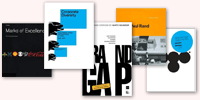
Opinion BY Armin
Spil Games loses its Bounce

Established in 2004 in The Netherlands with a single online game, Spil Games currently offers over 4,000 games aimed at three key demographics: 8-to-12-year-old girls, teens (both boys and girls 10 to 15), and family (mostly moms and their kids). The games are offered through various portals providing them in 19 different languages and they attract over 130 million unique visitors each month. At the end of January they introduced a new identity.
Continue reading this entry

DATE: Feb.21.2011 POSTED BY: Armin
POSTED BY: Armin CATEGORY: Entertainment
CATEGORY: Entertainment  COMMENTS:
COMMENTS:

TAGS: gradient, helvetica, icon, sans serif,

Opinion BY Armin
Walibi Rocks
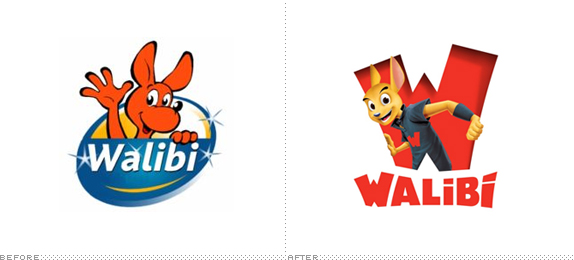
First opened to the public in 1975 in Wavre, Belgium (near Brussels) by Eddy Meeùs, Walibi is a family of amusement parks with locations in the original Wavrens, two in France, one in Holland, and a water park counterpary in Belgium as well, called Aqualibi. The name comes from a combination of three towns: Wavre, Limal, and Bièrges — the kangaroo character reportedly came after Meeùs’ son noticed that a wallaby looked like a kangaroo. The parks were purchased by Six Flags in 1998, then sold to British investment company Palamon Capital Partners in 2004, then to Compagnie des Alpes in 2006, who own a wide range of amusement parks across Europe. Earlier this year, Walibi unveiled a complete new look and Walibi-themed universe in collaboration with multiple specialists in animation, marketing, merchandising, and more. The identity was designed by FigTree in Paris. The site NewsParcs has the complete story in detail.
Continue reading this entry

DATE: Feb.16.2011 POSTED BY: Armin
POSTED BY: Armin CATEGORY: Entertainment
CATEGORY: Entertainment  COMMENTS:
COMMENTS:


A B-Side BY Armin
Entertainment One

Founded in 1973, and formerly known as E1 Entertainment, Entertainment One (also eOne) is a global distributor of music, film, and television programming. Its strategy is to “to build the leading international independent entertainment content ownership and distribution business which acquires films, television programs and music content and exploits these rights in all media throughout the world.” New logo designed by Toronto-based Parcel Design.
Thanks to Michael Scoular for the tip.

DATE: Feb.14.2011 POSTED BY: Armin
POSTED BY: Armin CATEGORY: Entertainment The B-Side
CATEGORY: Entertainment The B-Side  COMMENTS:
COMMENTS:

TAGS:

Opinion BY Armin
With a Great Tagline Comes Great Responsibility
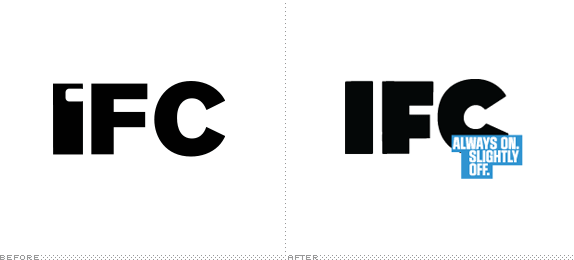
Launched in 1994, the Independent Film Channel (IFC) has grown remarkably from a weird little runt of a channel that was a spin-off from Bravo (before Bravo was all Queer Eye for the Straight Guy, Housewives of…, and Top This or That — into one of the most progressive and rewarding cable channels through original programming (Portlandia), fantastic re-runs (Freaks and Geeks), and movies where the endings aren’t always happy. Today the IFC universe consists of the cable channel, a feature film production company, a distributor of independent and foreign films, and a theater in New York City. For the better part of 2010, IFC has been using a new logo and tagline created by Portland, OR-based Feel Good Anyway and they recently put up a great case study of their ongoing project with IFC.
Continue reading this entry

DATE: Feb.14.2011 POSTED BY: Armin
POSTED BY: Armin CATEGORY: Entertainment
CATEGORY: Entertainment  COMMENTS:
COMMENTS:

TAGS: animation, feel good anyway, ifc, on-air, television,

A B-Side BY Armin
Big Fish Games
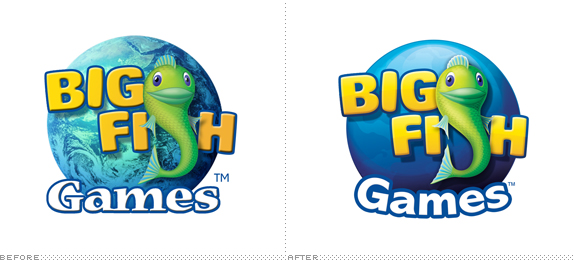
Founded in 2002 in Seattle, WA, Big Fish Games produces its own line of video games that can be played online or as an app on the iPhone and iPad. Their logo evolution came in the Summer of 2010, but that fish is too adorable and that type too chunky to leave un-posted. A bigger view and a shot of the sign installation after the jump.
Continue reading this entry

DATE: Feb.11.2011 POSTED BY: Armin
POSTED BY: Armin CATEGORY: Entertainment The B-Side
CATEGORY: Entertainment The B-Side  COMMENTS:
COMMENTS:

TAGS: globe, illustration,

Opinion BY Clinton Duncan
From Five to 5

Channel Five is a television network in the United Kingdom, originally launched in 1997, with a variety of programming for all ages and interests from soap operas in the morning, to cartoon blocks for kids; to sitcoms, procedurals, and reality shows for the after-work crowd through original shows as well as American imports. Recently they were purchased by billionaire Richard Desmond and it seems the new management decided that as well as a change of ownership, a change of branding was also in order. Curiously, this is the channel’s third change of brand mark in the past 10 years — which even for the constantly refreshing and evolving world of televisual branding, seems a little fast. The last version was notably designed by Dixon Baxi and will remain on the air until February 14 when the new logo takes over.
Continue reading this entry

DATE: Feb.11.2011 POSTED BY: Clinton Duncan
POSTED BY: Clinton Duncan CATEGORY: Entertainment
CATEGORY: Entertainment  COMMENTS:
COMMENTS:

TAGS: channel 5, number, red, sans serif, uk,

A B-Side BY Armin
LivingSocial

Established in 2007, LivingSocial is a site that serves up daily deals — 50% off this, 25% off that, etc. — promoting social interaction between friends. In December it secured a $175-million-investment from Amazon. A new logo was introduced this week. You can see a detail of the icon over the “i” here.
Thanks to Kyle Hildebrant for the tip.

DATE: Feb.10.2011 POSTED BY: Armin
POSTED BY: Armin CATEGORY: Entertainment The B-Side
CATEGORY: Entertainment The B-Side  COMMENTS:
COMMENTS:


Opinion BY Armin
Viva gets Sharper
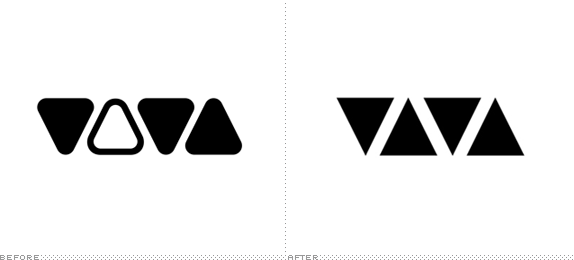
First aired in 1993, Viva is a music and entertainment channel on German television — with programming that ranges from Friends to America’s Next Top Model to Jackass to its own Top 10, Top 50, and Top 100 videos. Originally owned privately, Viva was purchased by MTV Europe in 2004 and since 2000 the channel has been exported to Switzerland, Austria, Hungary, Poland, and the UK. In January Viva launched a new on-air package and identity developed by the internal creative team of MTV Networks Germany.
Continue reading this entry

DATE: Feb.09.2011 POSTED BY: Armin
POSTED BY: Armin CATEGORY: Entertainment
CATEGORY: Entertainment  COMMENTS:
COMMENTS:


Opinion BY Armin
Disney Junior, more Flexible than Disney Senior
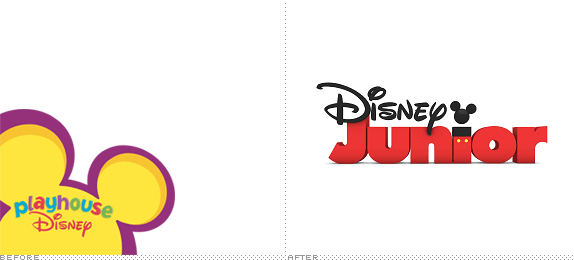
This coming February Disney is introducing a new channel and programming block, called Disney Junior, that will replace SOAPnet and Playhouse Disney, respectively. Playhouse Disney currently airs through the main Disney Channel and is aimed at the preschool range of kids, typically 2 – 5. Disney Junior will keep airing through the Disney Channel and expand its audience to include 7-year-olds and new content. Playhouse Disney also operates as a full channel in more than twenty markets overseas. SOAPnet is a channel about soap operas so… um, yeah, it makes perfect sense for people that watch soap operas to be rewarded with a new kids channel. (I’m guessing they don’t give away cable channels like toothpicks at a restaurant so Disney is probably using its cable real estate to reshuffle). Anyway, Disney Junior will carry favorites like Handy Manny and Special Agent Oso. Announced back in May of 2010, Disney Junior presented its new identity in late October of 2010.
Continue reading this entry

DATE: Jan.24.2011 POSTED BY: Armin
POSTED BY: Armin CATEGORY: Entertainment
CATEGORY: Entertainment  COMMENTS:
COMMENTS:

TAGS: animation, disney, flexible identity, sans serif,

Follow-Up BY Armin
Follow-up: Oprah Winfrey Network
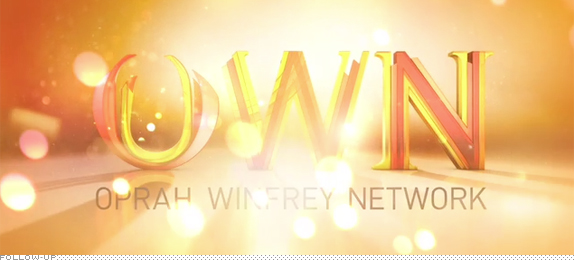
Last October we reported on the new identity of OWN, the Oprah Winfrey Network. I closed the post with this: “As with most TV identity reveals, we will have to wait to see how it evolves and how it animates. Expect a follow-up post in January 2011.” So, as prognosticated, here is the follow-up, now that the channel has been on the air for a few days. Philadelphia-based Bigsmack was in charge of designing the on-air package for OWN.
Continue reading this entry

DATE: Jan.14.2011 POSTED BY: Armin
POSTED BY: Armin CATEGORY: Entertainment
CATEGORY: Entertainment  COMMENTS:
COMMENTS:





























